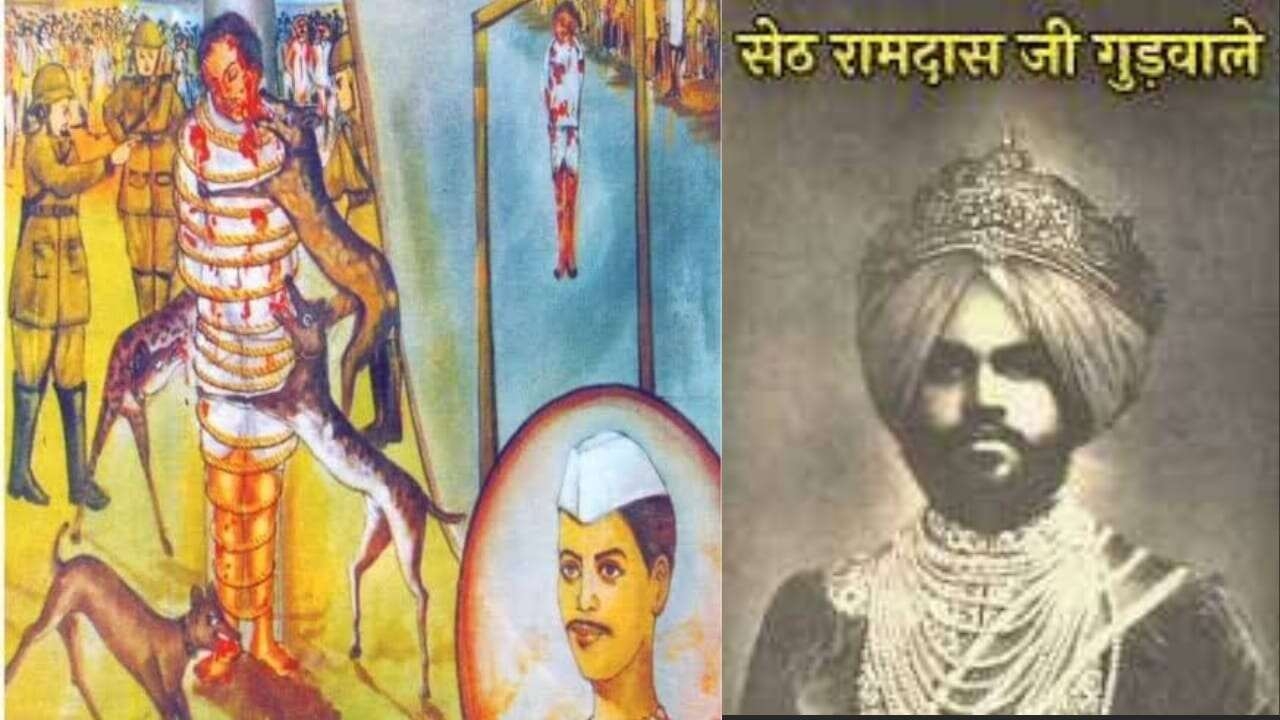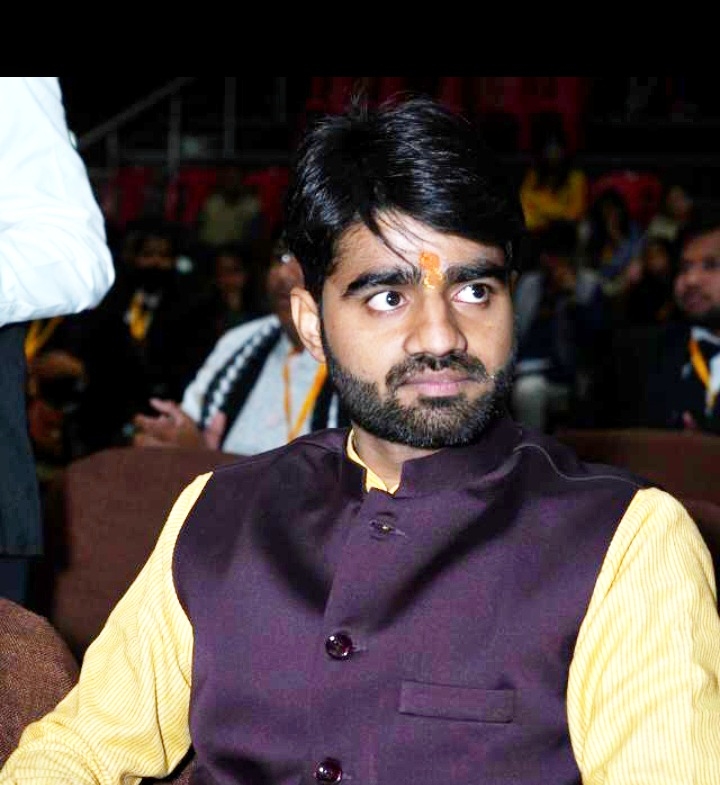Seth Ramdas ji Gudwale : Where are these names in the pages of history ?
Krishna Das Gurwala, besides being a banker, was the richest person in Delhi. He lived on Nai Sadak and was the first managing director of this company. Krishna Das"s son Satyanarayan Gurwala later invested a lot of money in the stock market in which he suffered a huge loss.

We have an old habit of forgetting freedom fighters and revolutionaries. We remember some names very well like Bhagat Singh, Chandrashekhar Azad, Subhash Chandra Bose, etc. But there are some names which got lost in the pages of history due to the effect of time and we have completely forgotten them and never even tried to remember them, one of those names is,
Seth Ramdas Gudwala was the richest Seth of North India.
He had innumerable pearls, diamonds and jewels and immense wealth in the idea of the British. He was richer than the Mughal emperors." The great revolutionary of 1857, Danveer, who was hanged before the British left the hunting dogs on him who ate his body alive. Seth Ramdas ji Goodwala was Delhi's billionaire Seth and Banker. And the last Mughal emperor was a close friend of Bahadur Shah Zafar.
He was born in an Agrawal family in Delhi. His family had established the first clothes mill in Delhi. There was a saying of his wealth, "Ramdas ji jaggery has so much gold and silver jewelery that he can stop the water of Ganga ji from his walls" when the spark of revolution started from Meerut in 1857 when the spark of revolution reached Delhi, the Mughal emperor Bahadur Shah Zafar was declared the hero of the 1857 military revolution.
After the defeat of the British from Delhi, the Indian forces of many princely states camped in Delhi. The problem of their food and salary arose. The king's treasury was empty. One day he put the jewels of his queens in front of the ministers. Ramjidas was a deep friend of the Gurwale Badshah. Ramdas ji did not see this state of the emperor. He handed over his crores of property to the emperor and said, "If the motherland is protected, money will be earned again."
Ramjidas not only gave money, but also arranged for sattu, flour, grains and fodder for bulls, camels and horses for the soldiers. Seth ji, who had only done business till now, also started the work of organizing the army and the intelligence department.
Seeing the power of his organization, even the British commanders were surprised. He spread a network of spies all over North India, made secret contacts with many military camps. He built a powerful army and intelligence organization from within. He sent spies to every corner of the country and requested even the smallest mansabdars and kings to help Bahadur Shah Zafar in this time of crisis and free the country.
The British government and officers started getting very upset with such revolutionary activities of Ramdas ji.
Due to some reasons, the British started occupying Delhi again. One day he got boxes of bottles of poisoned liquor placed in front of the shops of Chandni Chowk, the British army would quench their thirst with them and lie down there.
The British realized that if they wanted to rule India, the death of Ramdas ji was very important. Seth Ramdas ji Gurwale was caught by deceit and the way he was killed is an example of cruelty. First he was tied to a pole with ropes, then hunting dogs were set free on him, after which he was hanged in the same half-dead state in front of the police station of Chandni Chowk in Delhi.
Ram Das's son Narayan Das was made an honorary magistrate by giving him the title of Rai Bahadur. He was also a member of the Delhi Municipal Committee for four years. During that time, he got the ghat constructed on the banks of the Yamuna. In 1889, the Delhi Cloth Mill was also established by the Gurwala family. According to author Mohit Garg, it was established in partnership between Lala Shri Ram, Chunnamal and the Gurwala family.
Krishna Das Gurwala, besides being a banker, was the richest person in Delhi. He lived on Nai Sadak and was the first managing director of this company. Krishna Das's son Satyanarayan Gurwala later invested a lot of money in the stock market in which he suffered a huge loss.
Mohit Garg says that later his descendants met Indira Gandhi and demanded that the money given by their ancestors to Bahadur Shah be returned. But this did not happen. The ownership of the Red Fort was transferred to Ram Das's name. The same family also came to own the Red Fort.
Historian and author of the book 'Aggarwal Samaj Ki Virasat' Mohit Garg says that in the meantime, the Mughal emperor had transferred the Red Fort to Seth Ram Das in exchange for the same three crore rupees. He says that this is also mentioned in a document issued on 27 August 1857 and this document was also preserved. The emperor had given him the title of Jagat Seth. Not only this, the emperor's coins in circulation at that time had Bahadur Shah Zafar's name and picture on one side and Seth Ram Das's name and picture on the other side.
The famous historian Tarachand has written in his book 'History of Freedom Movement' - "Seth Ramdas Gudwala was the richest Seth of North India. According to the British, he had innumerable pearls, diamonds and jewels and immense wealth. He was richer than even the Mughal emperors.
His wealth was talked about even in the markets of Europe” But his name in the history of India is not due to his incomparable wealth but because of the sacrifice he made in the freedom struggle. Which very few people know today! What is the connection of Hindu College with 'Gudwale'
The credit for establishing the first college in Delhi also goes to these Gurwales. In 1899, Krishna Das Gurwale established Hindu College in Kinari Bazar of Chandni Chowk. Initially it was run in rented rooms there. Later in 1908, the college was shifted to a building donated by Rai Bahadur Sultan Singh at Kashmiri Gate and hostel facilities were also provided in it.
Hindu College was established in 1899 by Krishna Dasji Gurwale in the backdrop of the nationalist struggle against the British Raj. It is said that some prominent citizens including Rai Bahadur Amba Prasad Gurwale also decided to start a college. Its purpose was to provide nationalist education to the youth while being non-elite and non-communal. Initially it was affiliated to Punjab University.
The reason for this was that there was no university in Delhi at that time. Later, despite the development of the college, it had to face a major crisis in the year 1902. Punjab University warned the college that if the college did not get a proper building, the university would disaffiliate the college. Then in 1922, when Delhi University was formed, Hindu College was also affiliated to Delhi University along with Ramjas College and St. Stephens College.
So this was the story of this personality and family who remained dedicated to the nation throughout his life. If Ramdas ji wanted, he could have looted India by joining hands with the British like some people. If he wanted, he could have gone to London, Paris, anywhere, but he set an example for which this nation will always be indebted to him.
Article by

Aalekh Sharma
Younginker
Advocate


